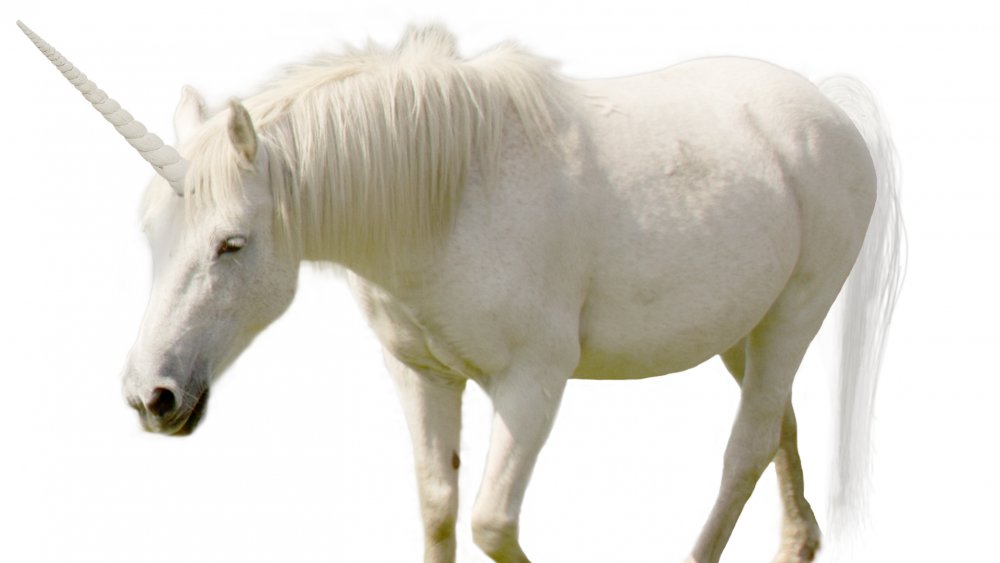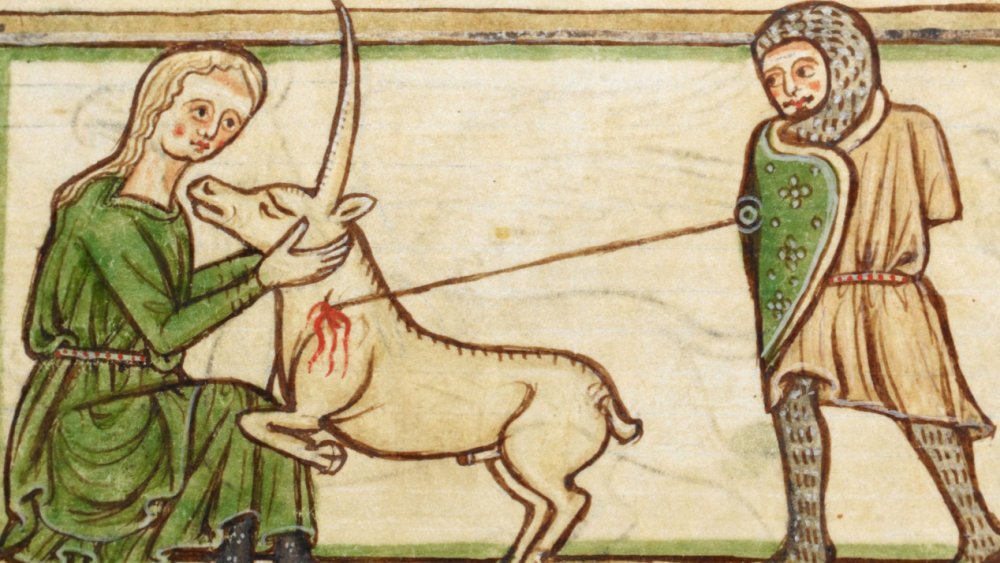The Legend Of Unicorns Explained
Remember the 1985 classic, Legend, in which the generically named hero, Jack (Tom Cruise), defeats the Lord of Darkness (Tim Curry) and stabs him in the abdomen with the horn of the last unicorn? You might assume the movie didn't know Jack about legends because Tim Curry isn't Satan, but rather a sweet transvestite with a satanic mechanic. Nevertheless, it got something very right about the legend of unicorns: if you plan to catch one, use a beautiful virgin or maiden as bait.
As SyFy contributor Hanna Flint points out, Legend's "virginal heroine," the white-clad Princess Lili (Mia Sara), accidentally distracts the last unicorn by touching it. This allows the Lord of Darkness's goblins to capture the magic animal and saw off its horn, which Flint interprets as Freudian imagery: a cranial "castration."
Compare that to the unicorn story from medieval Europe, recounted by the American Museum of Natural History, in which a hunter uses "beautiful young maiden" to lure the creature. The maiden strokes its horn (that's not a joke), and the animal lays on her lap. Just as the unicorn realizes it's been led-on by a horn tease, the hunter snags his prize and the remorseful maiden cries. According to Christian lore, the lap-happy unicorn lays on a virgin. Per the Encyclopedia Britannica, in one version, the virgin breastfeeds the unicorn before leading it to a king's palace. But not all unicorns are such horny devils.
A unicornicopia of legends
Unicorn stories are a cross-cultural phenomenon. But not every variant involves the possible horndoggery of an animal that you catch by letting it drink from the ample mammary of an attractive woman. That's not because the boob trap falls flat in the other tellings, which would presumably describe those failures as "milk duds." While unicorns are universally elusive and magical in these myths, these nonexistent historical animals are far from uniform.
Take, for example, the millennia-old account by the Chinese sage Fu Hsi. As detailed by the American Museum of Natural History the Asian unicorn "resembled a deer but had shining scales like a dragon." It had magical symbols and signs emblazoned on its back. This unicorn sported a single flesh-covered horn. But some of its Eastern cousins had two or three. The creatures are symbols of wisdom and power. European unicorns always played hard-to-get. And sometimes they would get your goat because they had goat torsos. Others were basically one-horned horses with goat hooves, possibly a goat's beard, and the tail of a lion, horse, or goat.
Italian explorer Marco Polo thought he spotted live unicorns. Much to his dismay, they were "very ugly brutes to look at" and "not at all like" the pristine creatures that cuddled with virgins in widespread accounts of his era. These were mud-loving beasts with a single black horn, buffalo-like hair, elephant feet, and "[heads] like a wild boar's." Polo was probably body-shaming Sumatran rhinos.

